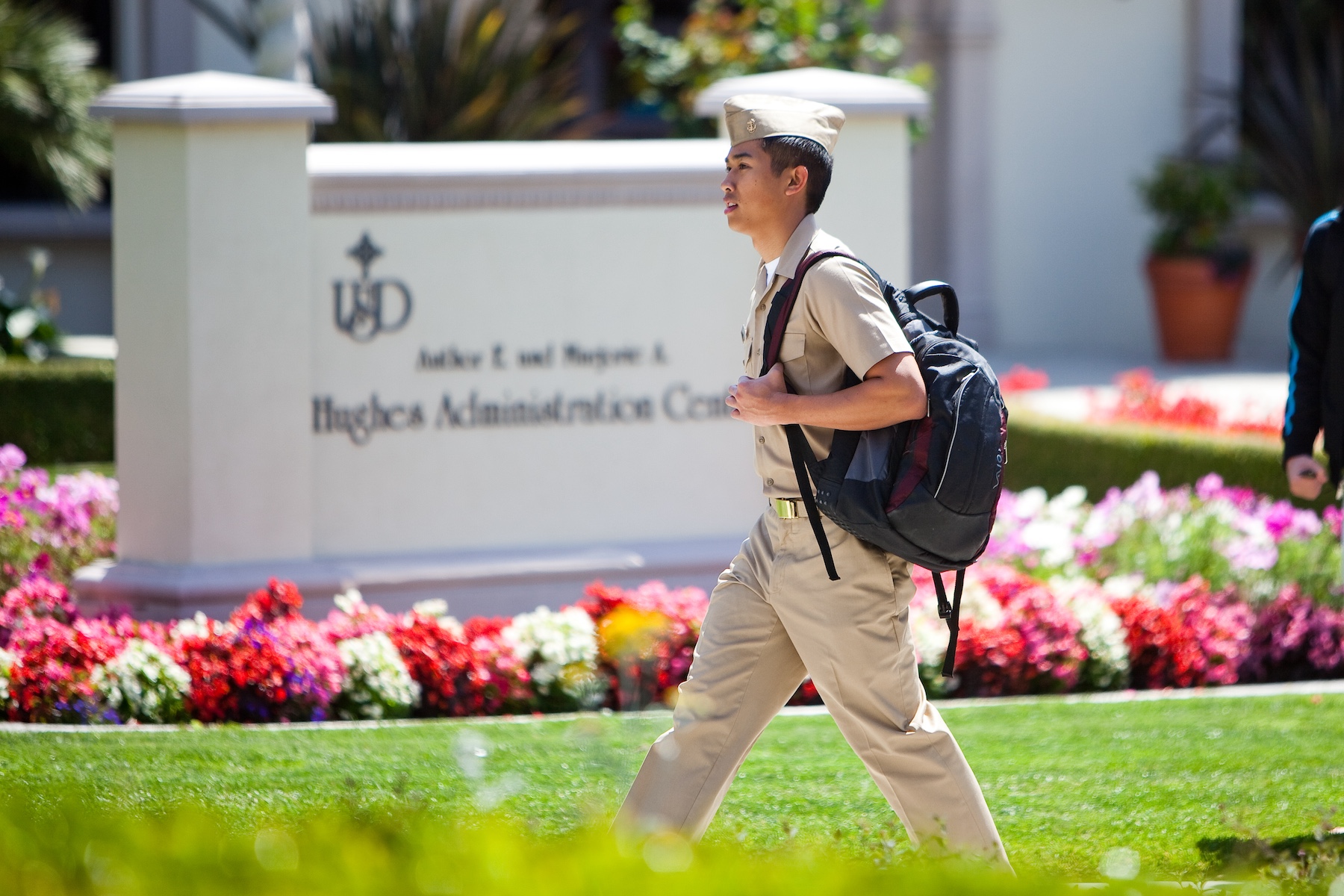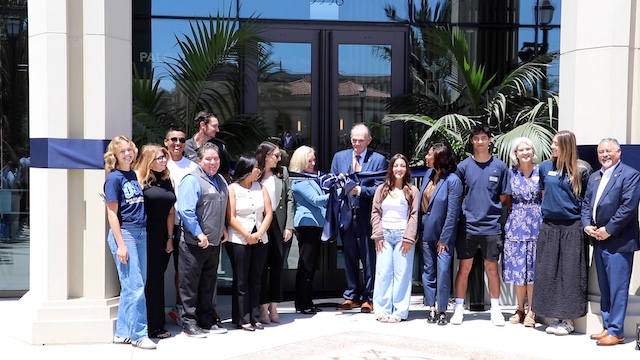New Study Reveals Complex and Widespread Sex-Trafficking Occurring Throughout San Diego County
SAN DIEGO, CA – The surprising findings of a three-year study on gang-involved sex trafficking, funded by the Department of Justice, were released this morning, Monday, October 26 at a press conference at the University of San Diego in the Institute for Peace & Justice Theatre. A detailed Executive Summary can be found below. The groundbreaking study, “Measuring the Nature and Extent of Gang Involvement in Sex Trafficking in San Diego,” lead by University of San Diego Kroc School of Peace Studies Professor Ami C. Carpenter, PhD, in collaboration with Point Loma Nazarene University Professor Jamie Gates, PhD, gathered and analyzed data from hundreds of current and former gang members, schools, law enforcement agencies, and victim service providers. Sheriff Bill Gore, County Supervisor Dianne Jacob, Generate Hope Founder Susan Munsey, and District Attorney Bonnie Dumanis, and Superintendent Cindy Marten also participated in the press conference.
“This study is the first long-term, comprehensive collection of data on the Commercially Sexually Exploited People (CSEP) industry ever conducted in San Diego County,” said Carpenter. “Our research combines the intelligence we gathered through hundreds of interviews with gang members, law enforcement representatives, school administrators and other community members with critical information we collected by reviewing incident, arrest and contact data provided by law enforcement agencies. The result is a report that accurately measures the various facets of San Diego’s growing human trafficking problem.”
Dr. Carpenter and Dr. Gates designed the study in collaboration with survivor service providers, law enforcement, prosecutors, County schools, and other researchers. “The inter-agency collaborative nature of Dr. Carpenter and Dr. Gates’ work will be invaluable to San Diego’s law enforcement community,” said San Diego County Sheriff Bill Gore.
According to the study, in San Diego County, the underground sex economy represents an estimated $810 million in annual revenue and involves more than 100 area gangs. The study estimates the minimum number of CSEP at 1,766 per year with an average age of entry between 14 to 15 years old.
Other key findings include:
- Number of “prostitution” arrests which are actually cases of sex-trafficking;
- Proportion of CSEP victims who are U.S. citizens versus those trafficked from other countries;
- Cities & neighborhoods most at risk for commercial sexual exploitation
- The number of gangs in San Diego involved in sex-trafficking, and their characteristics;
- Demographics of traffickers and trafficked individuals (age, ethnicity, etc.);
- Key “hotspots” where sex-trafficking occurs;
- Recruitment tactics; and
- Recruitment activity within local public schools.
Looking forward, the study highlights future trends, which include the need for cross-sector approaches to community problems and sustainable capital for nonprofits. In addition, the study provides victim service providers with the data needed to justify substantial improvements in the size and scope of support services.
This project was supported by Award No. 2012-R2-CX-0028, awarded by the National Institute of Justice, Office of Justice Programs, U.S. Department of Justice. The opinions, findings, and conclusions or recommendations expressed in this study are those of the author(s) and do not necessarily reflect those of the Department of Justice. In addition, members of the San Diego County Human Trafficking and Commercial Sexual Exploitation of Children Advisory Council supported the study.
About the University of San Diego
The University of San Diego is a Catholic institution of higher learning committed to teaching, the liberal arts, the formation of values and the creation of ethical leaders. Chartered in 1949, the school enrolls approximately 8,300 undergraduate and graduate full-time equivalent students. The University of San Diego has a long history of public service and is recognized as a Changemaker Campus by Ashoka, the global association of the world’s leading social entrepreneurs. The university’s eight academic divisions include the College of Arts and Sciences, The School of Business Administration, The Shiley-Marcos School of Engineering, The School of Law, The School of Leadership and Education Sciences, the Hahn School of Nursing and Health Sciences, The Joan B. Kroc School of Peace Studies, and the Division of Professional and Continuing Education. For more information, visit: www.sandiego.edu.
About Point Loma Nazarene University
Point Loma Nazarene University is a selective Christian liberal arts institution located in San Diego, California. Founded in 1902, PLNU is known not only for its 90-acre campus overlooking the Pacific Ocean but also for its well-rounded, forward-thinking graduates. In addition to more than 60 undergraduate areas of study, PLNU offers graduate programs and adult degree options at regional centers throughout Southern California. PLNU serves more than 3,500 students. For more information, visit: www.pointloma.edu.
EXECUTIVE SUMMARY
The groundbreaking study, “Measuring the Nature and Extent of Gang Involvement in Sex Trafficking in San Diego”[1] focused narrowly on one of the most understudied aspects of human trafficking in the United States: the relationship of street gangs as facilitators of sex trafficking. Researchers gathered and analyzed data from hundreds of current and former gang members, schools, law enforcement agencies, and victim service providers. In all, data was collected from 1205 individuals, making it one of the largest, most comprehensive human trafficking case studies in the United States to date: 156 gang affiliated persons, 702 first-time prostitution offenders, 189 survivors from eight victim services programs, and 140 County School administrators and staff. The study is a large-scale model of collaborative research to impact policy and practice, and serves as a national model for future research on human trafficking more broadly.
KEY FINDINGS
- Sex trafficking is San Diego’s 2nd largest underground economy after drug trafficking. The underground sex economy represents an estimated $810 million in annual revenue
- Our methodology has produced San Diego County’s first credible estimate of sex trafficking victims/survivors per year: 8,830 - 11,773 of whom 1,766 came into contact with law enforcement
- At least 110 gangs are involved in commercial exploitation of people (CSEP). 85% of pimps/sex trafficking facilitators interviewed were gang involved
- Pimps/sex trafficking facilitators are not primarily African American. Our sample of traffickers in prison contained roughly an equal number of white, black and Hispanic facilitators.
- 15 years old is the average age of entry into child commercial sexual exploitation (CSEC)
- Sex trafficking facilitators control 4.5 victim/survivors on average
- 42% of first-time prostitution arrests are in fact cases involving sex trafficking
- Domestic trafficking accounts for the majority of CSEP
- Transborder criminal networks are involved in trafficking minors and adults between Mexico and the United States. 20% of trafficking victims referred to service providers come from Mexico and 10 other countries
- Female recruiters and pimp/sex trafficking facilitators are perceived to be a significant and growing feature of the underground sex economy
- Significant CSEC recruitment is happening on high school and middle school campuses
METHODS
This 3-year study reports on three major sets of findings: (1) the scope and nature of gang involvement, (2) the scope of nature of victimization, and (3) estimates of the regional commercial sex economy. It was designed to address seven shortcomings in human or sex trafficking research thus far:
- Inability to produce credible estimates of sex trafficking (and the dearth of reliable statistics on the extent of sex trafficking)
- Conflation of commercial sexual exploitation with sex trafficking
- Lack of primary data on sex trafficking (studies rely instead on secondary sources - newspaper reports and media investigations, or interviews with intermediaries: social service providers, counselors, law enforcement, victim advocates, pro bono attorneys, and others working with trafficking victims
- Inability to identify networks of sex traffickers
- Understudied extent of gang involvement in sex trafficking
- Over-reliance on qualitative methods
- Small sample sizes
We used mixed-methods to collect and synthesize data (qualitative and quantitative) from five major sources: (1) a Survivor Services Dataset from a prostitution first offender diversion program, (2) a Survivor Services Dataset from surveys conducted by eight service providers, (3) Law Enforcement Incident Reporting (combined Police arrest records and Sheriff booking datasets), (4) School Focus Groups, and (5) In depth interviews with individuals involved in – or knowledgeable about – sex trafficking.
From these five datasets, we report quantitative and qualitative findings that shed light on the scale and complex challenges associated with Commercial Sexual Exploitation of People (CSEP), Commercial Sexual Exploitation of Children (CSEC), and Commercial Sexual Activity (CSA) broadly defined.[2]
GANGS AND SEX TRAFFICKING
Sex trafficking is San Diego’s 2nd largest underground economy after drug trafficking. The underground sex economy represents an estimated $810 million in annual revenue and involves 110 area gangs. The study estimates the minimum number of CSEP at between 8830 and 11,773 per year with an average age of entry between 14 to 15 years old. This represents the first credible estimate of sex trafficking victims/survivors per year in San Diego County. 85% percent of facilitators are gang-involved. Facilitators fall into four main categories, with associated characteristics and preferred strategies:
- Traditional ‘Pimps’ are the most likely to use the term ‘pimp’ to describe themselves, and to take pride in this identity. The traditional facilitator’s identity as a pimp is tied to the desire for social recognition and status. Traditional pimps manage between 1-10 individuals on average. They keep all, or the vast majority, of money made in each sexual encounter
- Vicious-Violent ‘Pimps’ are a subcategory of Traditional ‘Pimps’ who use the greatest coercive force with CSEP and CSEC. They use extreme tactics of physical and psychological control. They control every aspect of commercial sexual exploitation, use psychological and physical violence to force high financial quotas. They are willing, and perhaps prefer, to recruit minors because of the malleability and vulnerability of young people.
- Protector/Business Partners reject the label ‘pimp’ describe, and themselves as contracted by adult sex workers, primarily as drivers or to provide security against rape or violence. Facilitators in this category say that they do not impose quotas. They often describe being approached or recruited by women. The interviewees describe it as a 'business partnership'. The revenue is split, making this one of the main differences between Protector/Business Partners and Traditional facilitators. 92% of Hispanics belong to the Protector/Business Partner category, however they make up only 32% of the entire population who describe themselves this way. 22% are Black, and 52% are White.
- Organized Crime Groups differ from gangs in their hidden or ‘underground’ nature, and how they are structured. They were often described as rings, closed groups where members are concerned with secrecy. Very few of the people we spoke to admitted to being involved at this level, but many were friends with, or had direct knowledge of, people who were. Examples included a devil worshipping ring, a child protection ring in a beachside community, and a transborder child sex trafficking ring.
Even though ‘pimping’ is commonly associated with Black gangs, we encountered roughly equal numbers of White, Black and Hispanic facilitators of sex trafficking during interviews in prison. In fact, the ratio of white to minority facilitators may be higher than is reported here given that our data does not account for the over-representation of Blacks and Hispanics in California jails and prisons.
Nor does the relatively even split between Black, Hispanic and White facilitators represent a complete picture - in the past 10 years, Somali gangs and Iraqi Chaldean groups have been indicted on sex trafficking charges, and Asian American and Native American gangs were under-represented in our dataset. It is likely that our data underreports the nuances of facilitator ethnic/racial background.
CHILD COMMERCIAL SEXUAL EXPLOITATION (CSEC)
Recruitment, Risk Factors, Scope
Recruitment into CSEC is happening at San Diego County high schools. We held conversations with 140 County School administrators and staff from 20 schools in North County, South County, East County and Central San Diego. All schools confirmed that recruitment was happening on their campuses. 18 of the 20 Schools confirmed CSEC cases on their combined campuses; all 20 confirmed suspected cases. Our findings confirm previous studies showing that young people most vulnerable to CSEC are those who experience abuse and neglect in the home, are runaways or homeless, identify as Lesbian, Gay, Bisexual, Transgender, and /or Questioning, and experience mental health issues and/or trauma. Gang members actively recruit by “swooping in” on newcomers to school; enticing vulnerable kids with material and emotional support. In addition, many youth are recruited explicitly by family members who force them into CSEC, or implicitly by family members who are themselves pimps/facilitators or prostituted individuals and for whom “the life” is a way of life.
DEMAND
According to interviews, clients of commercial sex come from all socioeconomic backgrounds and ethnic backgrounds. The demand for commercial sex is widespread, buoyed by cultural acceptance and perceived impunity.
The National Institute of Justice (NIJ), the Research, Development, and Evaluation Agency of the US Department of Justice (DOJ), has been a leader in the United States in funding and commissioning research on trafficking issues. This project was supported by Award No. 2012-R2-CX-0028, awarded by the National Institute of Justice, Office of Justice Programs, U.S. Department of Justice. The opinions, findings, and conclusions or recommendations expressed in this study are those of the author(s) and do not necessarily reflect those of the Department of Justice. In addition, members of the San Diego County Human Trafficking and Commercial Sexual Exploitation of Children Advisory Council supported the study.
[1] Hereafter “Gang Sex Trafficking in San Diego”
About the University of San Diego
Strengthened by the Catholic intellectual tradition, we confront humanity’s challenges by fostering peace, working for justice and leading with love. With more than 8,000 students from 75 countries and 44 states, USD is among the Top 20 Best Private Schools for Making an Impact according to The Princeton Review. USD’s eight academic divisions include the College of Arts and Sciences, the Knauss School of Business, the Shiley-Marcos School of Engineering, the School of Law, the School of Leadership and Education Sciences, the Hahn School of Nursing and Health Science, the Joan B. Kroc School of Peace Studies, and the Division of Professional and Continuing Education. In 2021, USD was named a “Laudato Si’ University” by the Vatican with a seven-year commitment to address humanity’s urgent challenges by working together to take care of our common home.
Contact:
Pamela Gray Payton
pgray@sandiego.edu
(619) 260-4681



